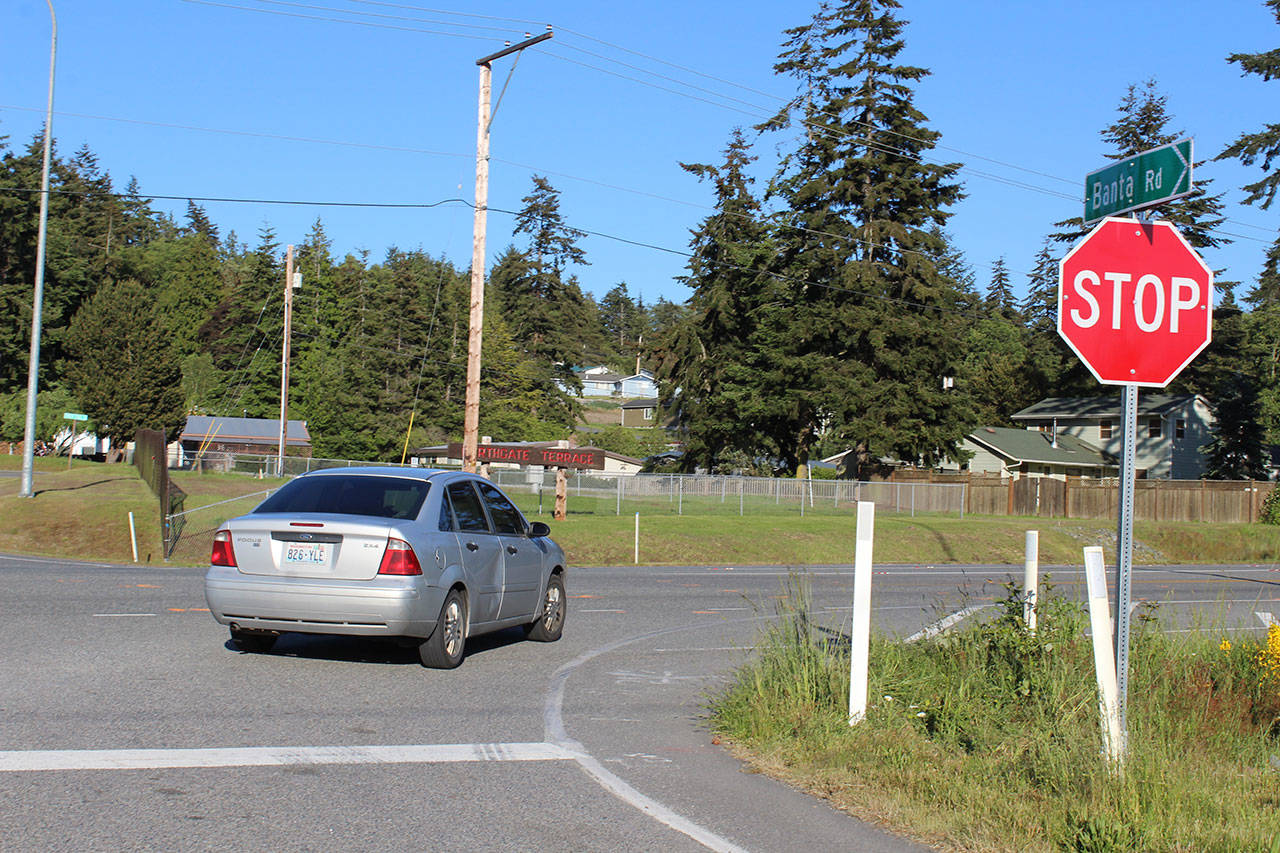The state and the Navy partnered to obtain a $2 million grant to fix a troublesome intersection on North Whidbey.
While there are a couple options for the intersection of Highway 20 and Banta Road, officials are leaning toward a roundabout — or traffic circle, according to Todd Carlson, state Department of Transportation planning and engineering services manager. The earliest the project would be built is 2019.
The state has been building roundabouts for years, but they are still controversial with many drivers, as discussions about a large roundabout project at Sharpes Corner in Skagit County has shown. Carlson said about a third of the people who attended a workshop on the project Wednesday in Oak Harbor were opposed to the project.
One opponent of roundabouts, Marci Buskala, lives on North Whidbey and hopes to help scuttle any plans to build one at the Banta Road intersection.
“Nobody knows about it,” she said. “It needs to be stopped right away.”
A roundabout at the highway and Banta Road would be the first built on a state highway on the island, though the county is building one this year at the triple-road intersection of Ault Field, Heller and Clover Valley roads.
Carlson said the project is about reducing congestion and increasing safety. He spent the night Wednesday discussing the Banta Road project at the meeting in Oak Harbor, which was attended by about 100 people.
The intersection is often congested with cars leaving Naval Air Station Whidbey Island from a gate on Banta Road. About four or five cars can be stacked up at one time, Carlson said.
The problem could get worse, he said, if the Navy gate is transformed to allow 24-hour, electronic access, which may increase traffic.
A more important consideration, he said, is that the intersection is one of the more dangerous on the island. There have been 25 accidents at the intersection in the last six years; eleven of those were injury collisions.
Mike Welding, base public affairs officer, agrees. He pointed out that a Navy man on a motorcycle was struck at the intersection last year.
“And there have been many, many close calls,” he said.
The Department of Transportation partnered with the Navy to apply for a grant through the Federal Lands Access program and got more than $2 million to fix the problem.
The two basic options, Carlson said, are to install a signal light or a roundabout. The drawback to the roundabout is that it would slow traffic on the highway at times when there are no cars coming off Banta Road.
A roundabout, however, is much safer. Studies and the department’s experience shows that the number of accidents will be cut by at least 70 percent; the collisions that do happen will likely be slow speed and less serious, he said.
Realistically, he said, a roundabout could reduce injury collisions to close to none.
“That’s what we’re striving for,” he said. “We don’t want anyone dying and we don’t want anyone hurt.”
Buskala, however, thinks the state is wrong about a roundabout at Banta Road and that it would make it more dangerous. She said the highway north of the intersection doesn’t allow enough stoppage time for cars going 50 miles per hour.
“It would be worse with a roundabout as there would be no ‘escape’ lanes as there are with the current intersection,” she wrote in an email. “With backed- up traffic in a roundabout, the damage would be catastrophic.”
Carlson said studies show that is just not accurate.
“Safety is really our No. 1 priority,” he said.



